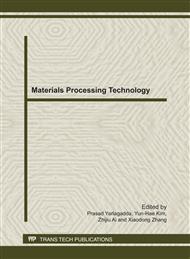[1]
Wang weixing.Discussion on Reducing CO2 Emissions of Iron and Steel Enterprises [J] China Steel, 2009, (6):24-26.
Google Scholar
[2]
Developing Steel-making Technology for Low CO2 Emission. My Steel.
Google Scholar
[3]
Shang Guan Fang qin1 ,Zhang Chun xia, Hu Changqing. Estimation of CO2 Emission in Chinese Steel Industry [J]. China Metallurgy,2010,20(5):37~42.
Google Scholar
[4]
Research and Development on European Ultra low CO2 Steelmaking Technology. Fubao Metal.
Google Scholar
[5]
RaoWen tao. Sta tus of Energy - saving and Greenhouse Gas Emission Reduction of SteelWorks and Countermeasures [J]. Baogang technology,2008,(3):16~20.
Google Scholar
[6]
Reducing CO2 Emissions of Steel Industry and Achieving Target of reducting Greenhouse Gas Emissions. China Metallurgical Equipment Accessories Net.
Google Scholar
[7]
Ran rui, Weng duan. Current Situation of CO2 Emission in Iron and Steel Producing and its Controlling Methods[N].Science & Technology Review, 2006,24(10):53-56.
Google Scholar
[8]
Wang weixing.Technical Progress in Chinese Ironmaking [J]. Iron and Steel,2003,38(5):62~66.
Google Scholar
[9]
Chenjin,Wang keqin.Metallurgy Environmental Engineering[M].Zhongnan university press, december 2008.
Google Scholar
[10]
Wang Haifeng,Zang Chunxia1,Hu Changqing. Important Development Trends of Coke Oven Gas Utilization in Steel Plant[J]. Journal of Iron and Steel Research,2008,20(3):1-5.
Google Scholar
[11]
Bi xuegong. Present status of CO2 emission from ironm aking in WISCO and potential analysis of emisson reduction[J].Ironmaking,2008,27(1):17-21.
Google Scholar
[12]
Zhang Chuyong,Yang Jiajun.Discussion on Energy Saving and Emission Reduction of Coking Procedure in Panggang[J].Pangang Technology,2009,32(1):1-9.
Google Scholar
[13]
Ganxian.Practice of Blast Furnace Intensity Smelting on 3# Blast Furnace in Pangang[J]. Pangang Technology, 2009, 32(2):31-33.
Google Scholar
[14]
Remarkable Achievements of 1# Blast Furnace in Panzhihua Steel and Vanadium Co.,Ltd.Chinese Steel Prices Net.
Google Scholar


